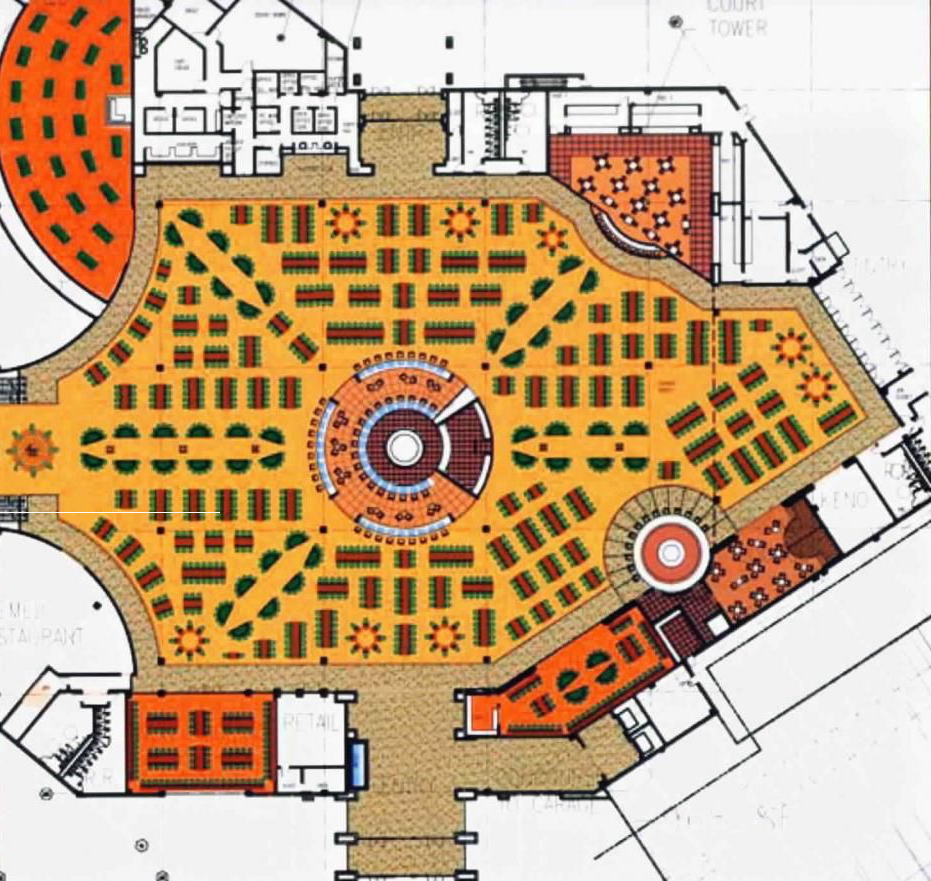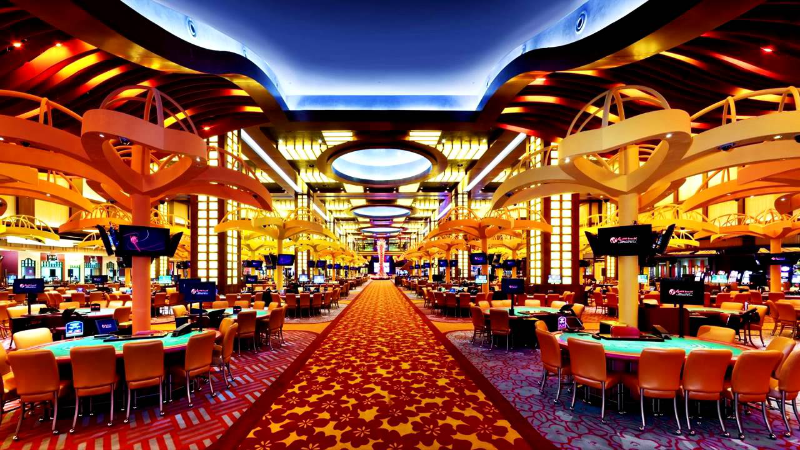The casino industry is one of the largest and most profitable in the world. Casinos are designed to attract and retain players for extended periods of time, and much of their success can be attributed to the psychology behind their floor design. From the lighting to the sounds, the layout to the decor, every aspect of a casino’s floor is carefully crafted to influence player behavior and maximize profits.
Casino floor design is a crucial aspect of the gambling industry that has a significant impact on player behavior. In this article, we will explore the psychology behind casino floor design and its impact on player behavior.
The History of Casino Floor Design
The casino industry has been around for centuries, but it wasn’t until the 20th century that the concept of casino floor design emerged. The first modern casino floor was created in Las Vegas in the 1950s. The idea was to create a space that was appealing to gamblers and would encourage them to spend more time and money in the casino.
The psychology behind casino floor design has evolved over time, and today’s casino floors are much more sophisticated than their predecessors. They are designed to create an immersive experience that will keep players engaged and coming back for more.
Space and Layout
One of the key elements of casino floor design is the layout. Casinos are designed to be large and expansive, with multiple levels and areas dedicated to different games. This is intentional, as it creates a sense of excitement and anticipation for players as they move through the casino.

The layout of the casino is also designed to keep players on the floor for as long as possible. Casinos are often designed with no clocks or windows, which makes it difficult for players to keep track of time. This creates a sense of timelessness and encourages players to stay and play for longer periods.
Decor on the Casino Floor
Finally, decor plays a crucial role in the design of a casino floor. Casinos use a combination of bright colors, flashy graphics, and luxurious materials to create an atmosphere of opulence and luxury. This can help to create a sense of escapism for players, making it easier for them to forget about their everyday problems and get caught up in the game.
In some cases, casinos also use decor to create a sense of nostalgia or familiarity. For example, a casino might decorate their gaming area to look like an old-fashioned saloon or a tropical island paradise. This can create a sense of familiarity for players and make them feel more comfortable and relaxed.
The Role of Lighting in Casino Floor Design
One of the most critical elements of casino floor design is lighting. Casinos use lighting to create an environment that is both exciting and comfortable. Bright, flashy lights and neon signs are used to draw players in and create a feeling of excitement and energy. Dimmer, warmer lights are used in areas where players might want to relax, like restaurants or lounges.

Lighting also plays a role in creating a sense of timelessness in a casino. Many casinos are designed with little to no natural light, making it challenging for players to tell what time of day it is. This can keep them playing for longer periods without realizing how much time has passed. Additionally, the lack of natural light can create a sense of disorientation, which can make it easier for players to lose track of their money.
Colors
Colors are also an essential element of casino floor design. Casinos use a variety of colors to create a stimulating environment that keeps players engaged. Red, for example, is often used to create a sense of urgency and excitement, while blue is used to create a more relaxing atmosphere.
Sound
In addition to lighting, sound is another crucial component of casino floor design. Casinos use a combination of music and sound effects to create an environment that is exciting and engaging. The sounds of slot machines, for example, are designed to be pleasant and enticing, encouraging players to keep playing.
The absence of clocks and windows in a casino also means that players are unlikely to be distracted by external sounds. This helps to create a sense of immersion and focus, making it easier for players to get caught up in the game.
Visual Elements
Visual elements are also a critical component of casino floor design. Casinos use a variety of visual cues to create an immersive environment that keeps players engaged. For example, slot machines are often designed with bright, flashing lights and vibrant graphics that are meant to draw players in and keep them playing.
The Sounds of a Casino Floor
In addition to lighting, sound is another crucial component of casino floor design. Casinos use a combination of music and sound effects to create an environment that is exciting and engaging. The sounds of slot machines, for example, are designed to be pleasant and enticing, encouraging players to keep playing.
The absence of clocks and windows in a casino also means that players are unlikely to be distracted by external sounds. This helps to create a sense of immersion and focus, making it easier for players to get caught up in the game.
The Impact of Casino Floor Design on Player Behavior
The psychology behind casino floor design is meant to create an immersive environment that keeps players engaged and coming back for more. The combination of space, lighting, sound, colors, and visual elements is intended to create a sense of excitement and anticipation that encourages players to spend more time and money on gambling.
One of the key ways that casino floor design influences player behavior is by creating a sense of timelessness. By eliminating clocks and windows, casinos make it difficult for players to keep track of time, which encourages them to stay and play for longer periods.
The design of a casino floor can have a significant impact on player behavior. For example, the absence of clocks and windows can make it difficult for players to keep track of time, leading them to play for longer periods. Additionally, the use of bright lights, engaging sounds, and engaging decor can create a sense of excitement and immersion that can keep players engaged for hours.
Casino floor design can also influence how players perceive their chances of winning. For example, slot machines are often designed to give players the illusion of control, with flashing lights and sound effects that suggest a near-win.
Conclusion
The psychology behind casino floor design is a complex and deliberate process aimed at maximizing player engagement, retention, and revenue generation. Casinos use various techniques, such as strategic lighting, sound, and color schemes, to create an environment that fosters excitement, relaxation, and a sense of escapism. The layout and placement of gaming machines, table games, and amenities are carefully planned to encourage players to stay longer and spend more money.
Furthermore, the psychology behind casino floor design also taps into human cognitive biases and tendencies, such as the gambler’s fallacy, which makes players believe that past events can predict future outcomes, and the availability heuristic, which makes people overestimate the frequency of rare events. The use of these biases can influence player behavior, leading them to take more risks and spend more money than they intended.
Overall, the impact of casino floor design on player behavior cannot be understated. Understanding the psychological mechanisms behind it can help individuals make more informed decisions when entering a casino environment. It is important to recognize the influence of casino floor design on our thoughts and actions and to approach gambling with caution and mindfulness.
